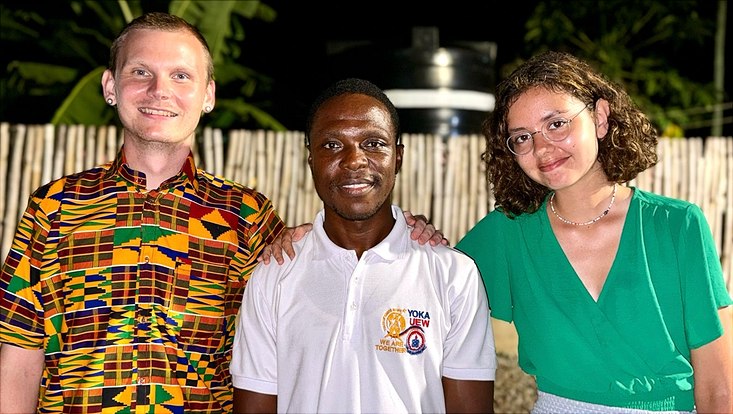New window on the universeSky Map Shows Over 25,000 Black Holes
19 February 2021, by Anna Walter
An international team of astronomers headed by Junior Professor Dr. Francesco de Gasperin, a researcher at the Hamburg Observatory and member of the Cluster of Excellence Quantum Universe at Universität Hamburg, has created the largest and clearest sky map in ultralow radio frequency. The map was published in the journal Astronomy & Astrophysics and shows more than 25,000 active massive black holes in distant galaxies.
At first glance, the map looks like a picture of the constellations at night; however, it is based on data from the LOFAR radio telescope, which has been in operation for roughly 10 years, and shows the sky in radio frequency. At this frequency, stars are nearly invisible. Instead, massive black holes dominate the image. Using this map, astronomers try to discover celestial objects that send waves at a low radio frequency. These include, for example, diffuse gases in the vast space of the universe, fading plasma ejected by massive black holes, and exoplanets, which are planets outside our solar system whose magnetic fields interact with their parent star. Although it is one of the largest of its kind, the published map covers only 2 percent of the sky. It will still take several years to map the entire northern sky.
“The map is the result of many years of work with incredibly complicated data. We had to develop new strategies for converting radio signals into sky maps, and we are proud to have opened this new window on our universe,” says Francesco de Gasperin, researcher at the Hamburg Observatory and the article’s lead author. The radio waves captured by LOFAR, the basis for the published map, reach up to 6 meters. This is equivalent to a frequency of roughly 50 megahertz. These are the longest radio waves ever used to observe such a large area of the sky at these depths.
Almost no research has been done in this area, because observations at low radio frequencies are difficult. The reason for this is the so-called ionosphere, a layer of free electrons surrounding Earth. It is essentially a lens over the radio telescope. Thus, radio observations are comparable to trying to see the world above from the bottom of a pool. If you look up, the water bends the rays of light and distorts the view. To counteract the ionosphere’s effects, the researcher used super computers and developed new algorithms. This made it possible to compensate for the disruptive impact every 4 seconds throughout a 256-hour observation period.
LOFAR is currently the largest radio telescope capable of measuring low radio frequencies from Earth. It encompasses 52 stations in 9 countries: Netherlands, Germany, Poland, France, United Kingdom, Sweden, Ireland, Latvia, and Italy. LOFAR is a joint project of the Netherlands Institute for Radio Astronomy (ASTRON); the Universities of Amsterdam, Groningen, Leiden, and Nijmegen; and the German Long Wavelength Consortium (GLOW), of which Universität Hamburg is also a member.
Publication
This article is available at https://arxiv.org/abs/2102.09238.




